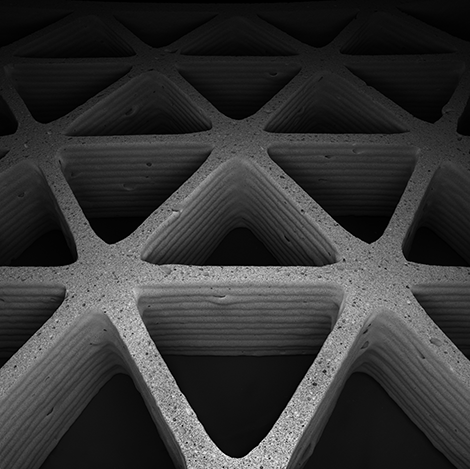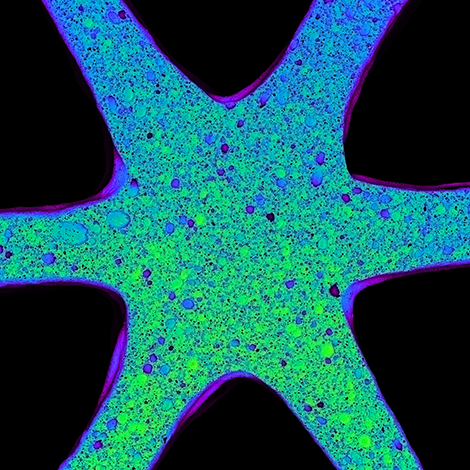//giphy.com/embed/KAP8uHdydujm
Inspired by natural cellular structures, researchers at the Harvard John A. Paulson School of Engineering and Applied Sciences, the Wyss Institute for Biologically Inspired Engineering at Harvard University, and MIT have developed a new method to 3D print materials with independently tunable macro-and microscale porosity using a ceramic foam ink.
Harvard and MIT researchers 3D printed lightweight hexagonal and triangular honeycombs with tunable geometry, density, and stiffness using a ceramic foam ink containing alumina particles, water, and air.
“Foam inks are interesting because you can digitally pattern cellular microstructures within larger cellular macrostructures,” said Joseph Muth, a graduate student in the Lewis Lab and first author of the paper.

Harvard and MIT researchers 3D printed lightweight hexagonal and triangular honeycombs with tunable geometry, density, and stiffness using a ceramic foam ink
“After the ink solidifies, the resulting structure consists of air surrounded by ceramic material on multiple length scales. As you incorporate porosity into the structure, you impart properties that it otherwise would not have.”
By controlling the foam’s microstructure, the researchers tuned the ink’s properties and how it deformed on the microscale. Once optimized, the team printed lightweight hexagonal and triangular honeycombs, with tunable geometry, density, and stiffness.
“This process combines the best of both worlds:You get the microstructural control with foam processing and global architectural control with printing, ” said Lorna Gibson, the Matoula S. Salapatas Professor of Materials Science and Engineering at the Massachusetts Institute of Technology, who coauthored the paper.
“Because we’re printing something that already contains a specific microstructure, we don’t have to pattern each individual piece. That allows us to make structures with specific hierarchy in a more controllable way than we could do before.”

Close up image of one node of the triangular honeycomb. The structure, which consists of air surrounded by ceramic, can be designed with specific porosity
The process allows for multifunctional materials, in which many different material properties, including mechanical, thermal, and transport characteristics, can be optimised within a structure that is printed in a single step.
While the team focused on a single ceramic material for this research, printable foam inks can be made from many materials, including other ceramics, metals, and polymers.






